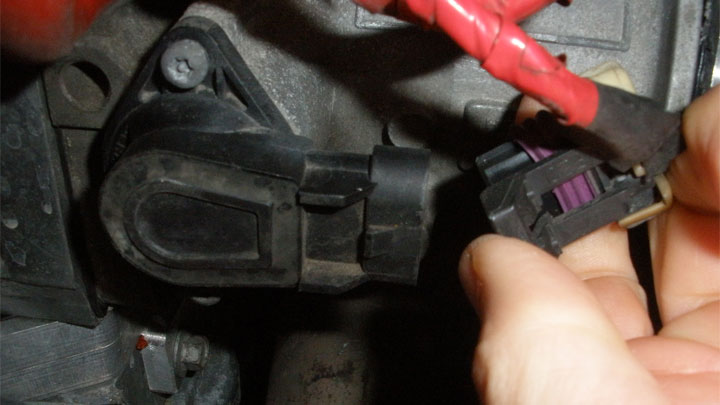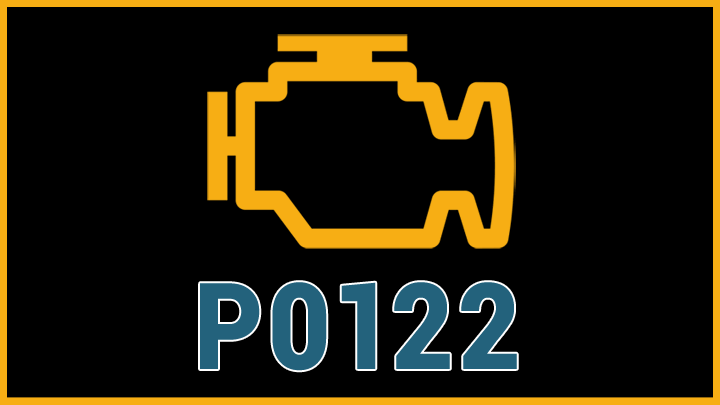Last Updated on July 22, 2022
While there are tons of diagnostic trouble codes that spell disaster, a P0122 code is one the least expensive or damaging DTCs you’ll encounter. So, if you use your trusty OBD2 scanner to discover code P0122 is the reason for your check engine light, you can take a deep breath and relax. It’s not that serious, and it’s pretty easy to fix.
But what exactly is trouble code P0122, and how can you repair it? Keep reading, and we’ll breakdown everything you need to know.
What Does Code P0122 Mean?
Your engine’s computer uses inputs from both the pedal position sensor/switch and the throttle position sensor/switch to optimize engine performance and fuel efficiency.
When the computer receives an abnormally low input from either of these sensors or switches, it throws a P0122 code. From there, it switches to predetermined air to fuel ratios and sparkplug timing outputs.
Read Also: P0121 Code, P0123 Code, P2135 Code, P2138 Code
Symptoms of Code P0122
Often you won’t notice a single thing besides a check engine light if you have a code P0122. However, as the problem progresses, you might notice several issues cropping up, and the longer you take to repair the code, the worse the situation can become.
While there are often no noticeable symptoms, you are likely to have increased emissions, and a code P0122 can cause you to fail an emissions test.
Furthermore, some vehicles might have a hard time getting started, and others might suffer from decreased responsiveness when you try to accelerate. The longer the code persists, the more likely it is for these problems to crop up.
- The engine may be hard to start
- Decreased responsiveness during acceleration
- Often no noticeable symptoms
Causes of Code P0122

When you have a code P0122, you can often narrow down the problem to one of three things.
First, you might have a faulty throttle position sensor/switch or a faulty pedal position sensor/switch. The code tells you that there is a problem with the reading come from the sensor or switch, and often the problem is just that.
Second, debris or torn up floor mats often block and gum up the pedal position sensor, and that could cause your code P0122.
Finally, it doesn’t matter if all the sensors and switches are working correctly if the wiring transmitting their signals and powering them are corroded or damaged.
While these are the most common problems that stem from a code P0122, electrical issues can cause all sorts of engine misfits if a wire shorts out or crosses to another circuit.
If you are dealing with an electrical gremlin, it might be best to take it to the shop if you’re not an electrical troubleshooting wizard.
- Defective throttle position sensor or switch
- Defective pedal position sensor or switch
- Debris interfering with the pedal position sensor
- Faulty or corroded wiring or sensor
Is Code P0122 Serious?
A code P0122 is one of the less serious codes your engine could have. While you don’t want to put repairs off indefinitely, if you have to go a few weeks before you can get it to the shop or while you’re waiting on a part to arrive, that’s perfectly fine.
The most significant concerns you might notice are an increase in emissions, a little excessive fuel consumption, and a slightly decreased throttle response. However, often the only symptom is a check engine light until the problem worsens.
How to Fix
More often than not, all you need to do to fix a code P0122 is to order a new throttle position sensor or a new pedal position sensor. Both components are relatively cheap and easy to replace, making this a hassle-free code to fix.
However, before you start ordering a new sensor, verify a few things first. Start by checking that the pedal position sensor is free from any obstructions. Often, small debris or tears in the floor mats will hinder the pedal position sensor’s correct operation.
From there, double-check that the sensor is getting and transmitting power signals the way that it should. While that might sound like a complicated process, if you have a multimeter, it’s pretty straight forward.
Begin by removing the sensor and checking for input power – you’ll need to have the engine running to do this, but both sensors are in locations where you should be able to do this safely.
If everything is getting power, check for corrosion and resistance in the wiring. If everything checks out, then the sensor is the problem.
If not, you’ll need to troubleshoot further to diagnose the issue. A lack of power is often a fuse issue, which can be a 10-cent fix to your check engine light.
However, if you have a wiring issue, it can be challenging to pinpoint the problem’s exact location. But, if you’re looking to skip the troubleshooting, the wiring harness itself is usually expensive.
Fortunately, wiring issues are rare. Typically these types of problems crop up when you haven’t run your vehicle for a while, and rodents or other small animals made a home out of your vehicle’s engine bay.




